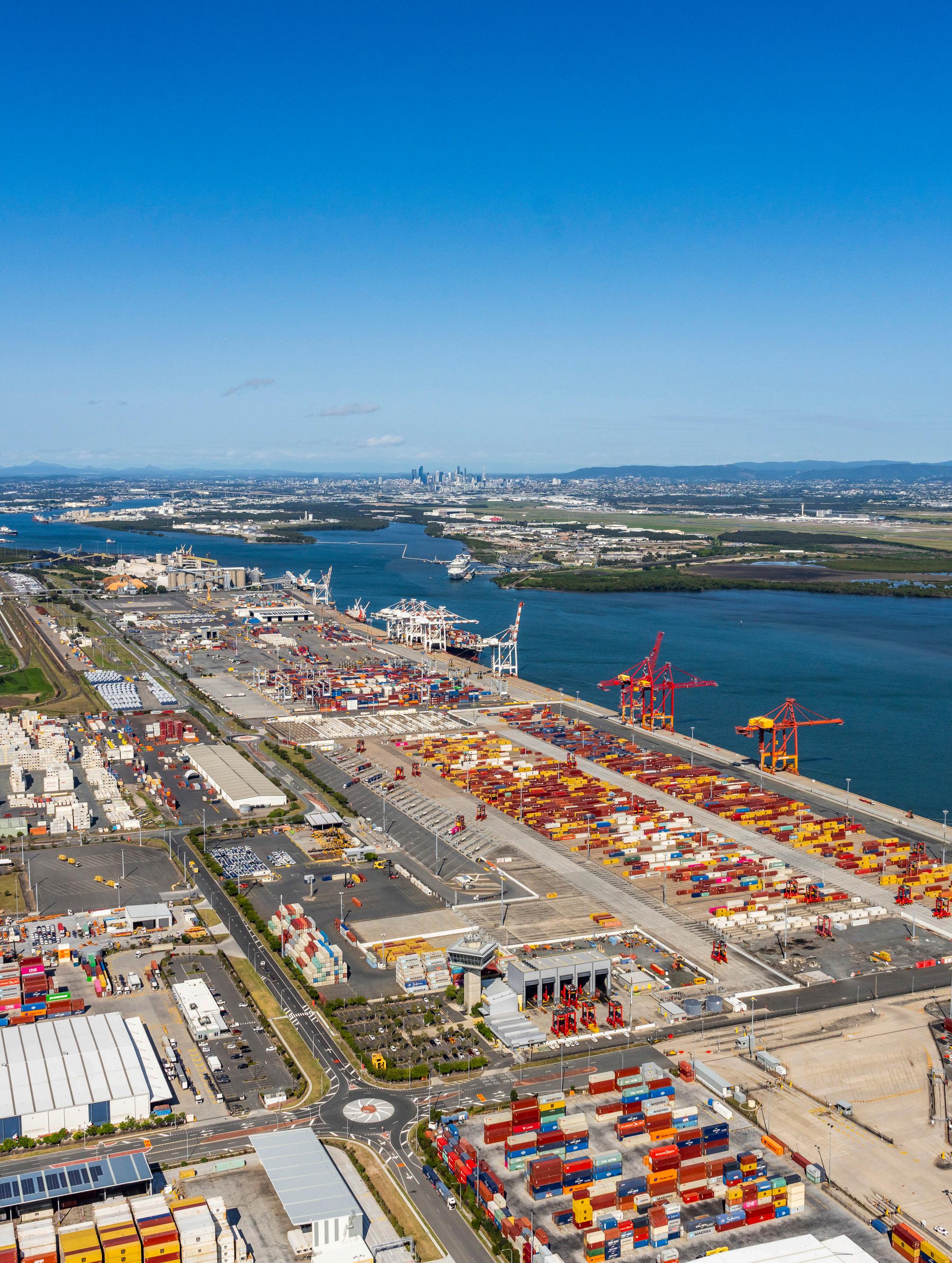









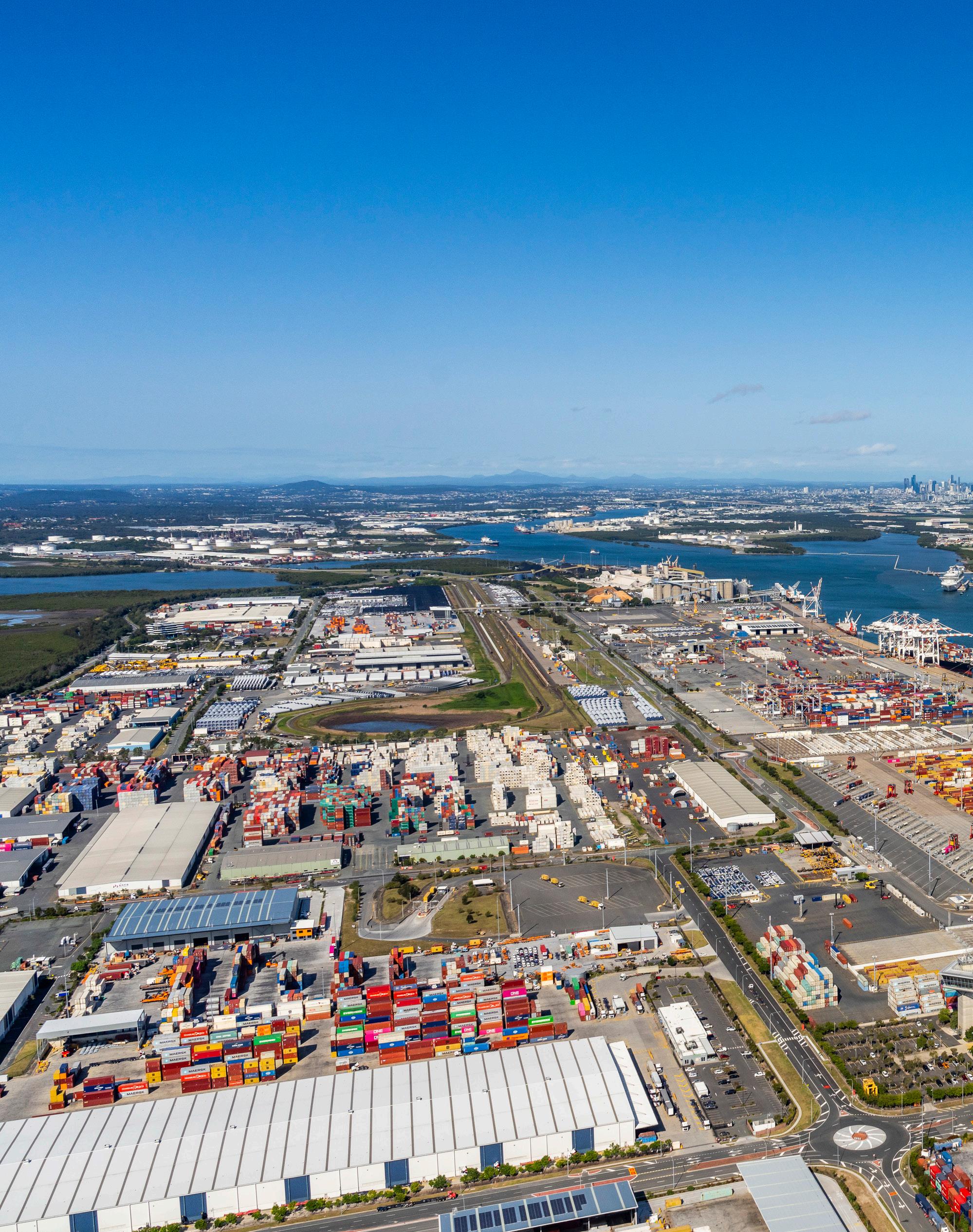












As a robust island nation, Australia is not only heavily dependent on maritime shipping for its economy but also a major contributor to the international supply chain and port operations industries. We explore the current state of the sector more deeply and look at the qualities that make Australia stand out in the shipping trade
Writer: Lauren Kania | Project Manager: Deane Anderton

Australia, the largest sovereign nation in Oceania, is entirely surrounded by water and, therefore, an understandably crucial player in the ports industry.
With its extensive coastline and strategic position enclosed by the Indian and Pacific Oceans, the country is home to a multitude of major ports that have an unparalleled impact on both the national and regional economies.
The country’s geographic position in the South Pacific makes it accessible to many other nations through some of its most prominent ports, including Sydney Harbour and the Ports of Melbourne, Brisbane, Fremantle, and Darwin – alongside many others.
As the key to international trade and global connectivity, these Australian ports are true engines of the economy and are only continuing to grow in importance as dependence upon maritime trade steadily increases.
The ports are also recognised for their ability to handle many different types of cargo, from agricultural products to highly technological shipping containers. This variety reflects the country’s economic strength and viability as well as the crucial significance of having reliable trade relationships across the globe in an increasingly connected world.
However, despite their unparalleled importance, international ports like those across Australia are facing various challenges, such as congestion, security, and environmental sustainability, which need to be addressed via efficient management and innovation.
Specifically, to ensure these ports stay competitive, the adoption of new technologies is necessary to allow for optimised port operations, improved security, and reduced environmental harm caused by such a titanic and expansive industry.
Additionally, the private sector will continue to be a major player in port operations and investment, with the regulatory framework set out by both the national governmental bodies and local governmental entities.
Known for its vast expanses, wondrous natural diversity, and sturdy economy, the island nation of Australia has a robust history of being a major player in the shipping and ports industry and will continue to remain a global leader in maritime activities even as the sector undergoes transformation.
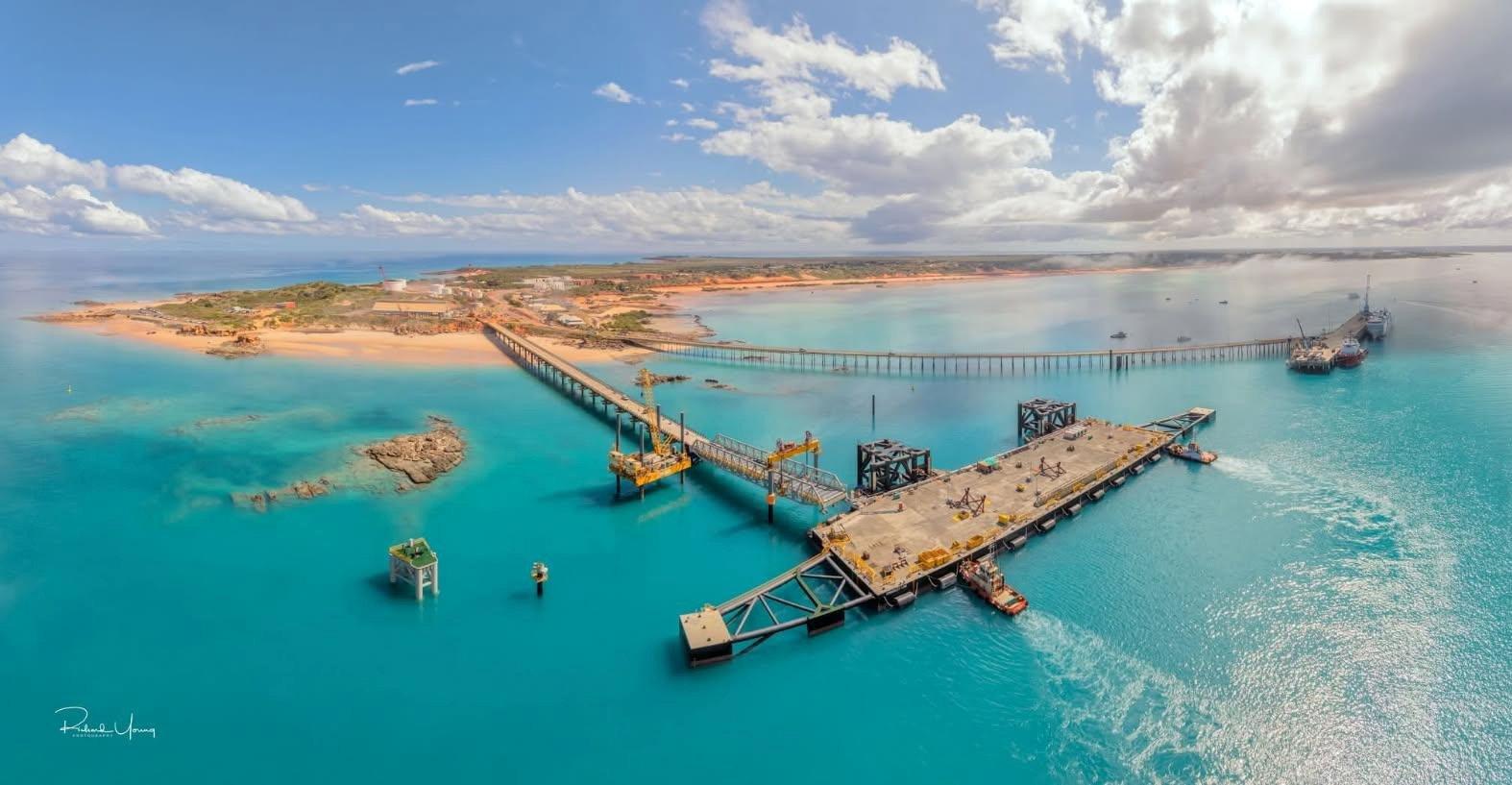
AndrewNatta has dedicated almost three decades to working on Non-Process Infrastructure across Northern Australia, bringing his extensive engineering expertise to major infrastructure and resource projects. His vision for economic enablement through logistics infrastructure has driven the development of two significant port projects in Western Australia: Onslow Marine Support Base (OMSB) in Onslow and Kimberley Marine Support Base (KMSB) in Broome. These projects, which have collectively delivered over $400 million in common user marine infrastructure, aim to open up Northern Australia’s Maritime Logistics capabilities. Andrew will continue to drive investment in common user infrastructure across Northern Australia with the vision of normalising freight and logistics networks for the North, in doing so, unlocking the true economic potential of Northern Australia.
Andrew’s passion for ports stems from his belief that wellfunctioning ports are economic enablers, creating ripple effects that impact all aspects of the economy. His innovative approach and commitment to enhancing accessibility for importers, exporters and general cargo operations has positioned him as a key figure in the region’s economic development
APAC Outlook (AO): Firstly, could you provide me with some insight into your 30-year career in non-process infrastructure across Northern Australia, and explain how you became interested in the major infrastructure and resource sector?
Andrew Natta (AN), Owner and Director: I started my career in trades such as plumbing, industrial gas, and commercial work. During this time, I undertook further studies in commerce, hydraulics design, and performance-based fire engineering solutions before working for multinational engineering firm, Connell Wagner, in hydraulic designs, fire engineering, and project management.
I was naturally drawn to the Pilbara region in Western Australia, where I began project managing multi-disciplinary engineering
projects at Nelson Point in Port Hedland whilst working for Connell Wagner.
I built a reputation for my ability to manage and oversee highly complex projects, managing the feasibility, detailed design, and documentation of strategic port upgrades such as ship loaders, wharf and berth upgrades, high volume fuel import bunkering pipelines, and road networks.
I saw the opportunity to start my own engineering firm in resource engineering and design, RED, focusing on strategic infrastructure projects and total turnkey solutions in all disciplines of engineering – in other words, RED not only designed but also built the projects.
My focus was to provide bespoke services and garner a reputation for high end delivery. It was during this time my interest grew around ports.
I like projects that are a pillar to the clients’ business. For example, an iron ore mine could have the very best iron on the market – but if it doesn’t have a rail network and port to support it, then it has no product.
I quickly learned that ports are true economic enablers - wherever you find a well-functioning port, you’ll find robust industry and a thriving community. This realisation fascinated me and firmly set my course in the direction of port infrastructure.
Building on the developments highlighted earlier, I recognised a significant opportunity at Beadon Creek in Onslow and went on to establish Onslow Marine Support Base (OMSB) to develop port infrastructure at the Creek. Drawing from my experience and working alongside a skilled team, we collectively embraced the challenge of transforming the region’s maritime logistics landscape.


I negotiated leases, design and documentation contracts, leased several kilometres (km) of ocean floor to build a 5km long shipping channel and gained the appropriate approvals, all with the support of the founding co-investors.
AO: Following on from this, could you talk us through your development of Onslow Marine Support Base and Kimberley Marine Support Base projects?
AN: The OMSB and KMSB projects enhance Northern Australia’s maritime logistics capabilities by providing:
• Direct access to point of use – most consumable materials and project cargo are imported into Perth from Asia driven back up from the Northwest.
• Direct access to export of regional products.
• Port certainty.
• Ability to commercially negotiate with the port in a private company approach.
• Ability to negotiate multi-year contracts.
• Non-characteristic port options for the market.
• Equal treatment for every customer.
AO: As part of your vision of economic enablement through well-functioning ports, how will you continue to drive investment in common user infrastructure across the region?
AN: We have a non-bias approach with our customers; we are focused on facilitating trade and taking a cooperative approach to meet their needs. This approach involves co-investment, giving clients greater certainty around costs and the management of their products as they move through the port. It’s a long-term investment strategy, designed to support both emerging businesses and those adapting to new markets by ensuring affordable, sustainable access and reliable port operations.
AO: How will this mission materialise over the next decade and have an impact on Northern Australia’s port infrastructure projects?
AN: We will see the remainder of the market throughout the Pilbara and Kimberley regions achieve certainty and the ability to service itself.

Western Australia has a very strong bulk market – the largest in the world – and it should be the crown of the north, the export of which takes priority in our ports. However, if we don’t have the ability to manage consumable needs of all regional industries, or if we are unable to facilitate the export of our of our other products, like rare earths and agricultural products within the region, we inevitably face the concentration risks associated with that. OMSB and KMSB provide the solution to overcome these problems, and we are now seeing the benefits of this.
AO: Looking ahead, how do you plan to evolve the current industry mindset and place a greater focus on accessibility and activity for importers, exporters, and cargo operations across Northern Australia’s ports?
AN: The industry mindset is changing because we are taking the time to educate the market that the capability is there and we are open for business.
The market has been asking for a solution for years – our job now is to prove we are reliable and can do what we say we can.
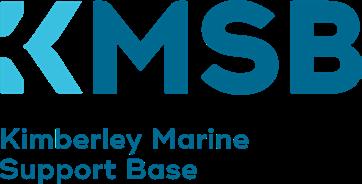
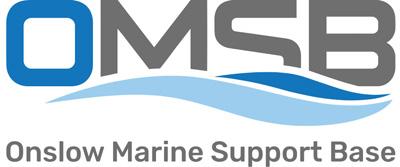


Located in Onslow, Western Australia, a gateway to the resource-rich North-West, Onslow Marine Support Base (OMSB) has become a trusted partner in delivering efficient, innovative, and sustainable solutions across the ports and logistics sector. Opening in 2017, OMSB has grown from an emerging port operator into a fully integrated logistics hub, committed to optimising supply chains and supporting the complex, changing demands of the offshore industry.
OMSB owns and operates the Beadon Creek facility, providing full control over its infrastructure and services. This includes a 277-meter berth line for vessels up to 120m LOA with a 6.5m draft, dual LCT ramps, 31,000m² of hardstand, and heavy lift crane capabilities. Just 17 kilometres away, at the Port of Ashburton (POA), OMSB operates as a licensed stevedore in collaboration with Pilbara Ports. This dual-port model enables streamlined mobilisation and demobilisation, enhanced scheduling flexibility, and reduced project risk, all through a single service provider.
Beyond marine operations, OMSB delivers extensive landside support including warehousing, storage, and transport. The base also offers exclusive quayside vessel maintenance for out of service periods, shoreside inspection and repair services, and multi-land storage options designed to minimise out-of-service periods.
OMSB’s infrastructure is currently undergoing key upgrades to support 900,000L of fuel storage and 800,000L of potable water capacity, with high-flow bunker points by January 2026. OMSB’s onsite services include fabrication works, hydraulic and pneumatic hose manufacturing and certified reefer container handling with safe food



management protocols. These capabilities are backed by residential staff and large-scale industrial land availability, reinforcing OMSB’s commitment to reliability, quality assurance, and supply chain leadership.
While OMSB’s core focus is infrastructure and logistics, it also plays a pivotal role in Australia’s offshore decommissioning efforts. Strategically located near the Carnarvon Basin, OMSB has completed five major decommissioning projects and is fully licensed to support dismantling, recycling, and compliant waste handling. Its proximity to the Northwest Shelf oil and gas fields, combined with access to ANSIA-zoned industrial land and a Class IV waste facility, positions OMSB as a key enabler of safe and efficient decommissioning in the region.
As the Pilbara prepares for the retirement of over 70 fields and hundreds of offshore structures over the coming decades, OMSB’s integrated ecosystem ensures readiness to support this transition, while maintaining its primary focus on infrastructure, logistics, and operational excellence.

OMSB’s unique integration of efficiency, innovation, and sustainability positions it as a leader in the ports and logistics sector. With a strategic location, advanced infrastructure, and a commitment to end-to-end solutions, including decommissioning, OMSB is more than a port operator; it is a forward-looking logistics partner driving smarter, future-ready supply chain outcomes.
For more information visit www.omsb.com.au
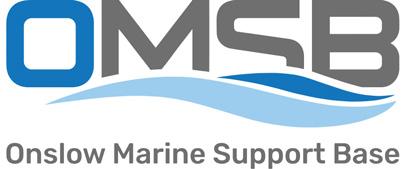


Australia is on the cusp of a logistics revolution with the imminent launch of the Kimberley Marine Support Base (KMSB) in Broome, set to commence operations in September 2025. Purpose-built to serve the mining, energy, cargo, agriculture, and cruise sectors, whilst servicing vessels across the Kimberley and Pilbara regions, KMSB is poised to redefine port logistics and unlock new economic potential for the north.
At the core of KMSB is a state-of-the-art floating wharf, engineered to operate 24/7 despite Broome’s extreme tidal variations. The 11,500+ tonne, 9,250 square metre structure includes a 255-metre berth line plus northern and southern dolphins, 400-metre bi-directional causeway, supported by an 85-metre linkspan bridge. This infrastructure sits within a naturally deep berth pocket (-15m LAT), whilst multiple berths enable consistent access from small vessels to ones ranging to over 300 metres length overall (LOA). The facility is equipped for high-load operations, including a high-capacity mobile harbour crane for cargo, subsea equipment, and modules, with integrated diesel bunkering delivering up to 200,000 litres per hour.
Strategically located within the Port of Broome, KMSB is designed to overcome the region’s historical tidal constraints, offering year-round operational access. The facility includes over 20 hectares of landside capability that we are progressively bringing on -line to support just-in-time staging and broader project mobilisation. This infrastructure is tailored for a wide array of cargo formats – containerised freight, bulk and breakbulk cargo, construction modules, critical minerals and the introduction of roll-on/roll-off vessels for equipment.
KMSB’s impact extends beyond infrastructure. It is expected to support over 1,000 direct and indirect jobs during construction and operations, catalysing economic growth across multiple

sectors. Its proximity to Broome Airport also enables integrated sea-road-air freight solutions, enhancing regional connectivity.
“This isn’t just a port, it’s a catalyst for economic growth,” said KMSB Managing Director, Andrew Natta.
“Every vessel that docks in Broome unlocks opportunities across our region, from local businesses and tourism operators to supply chains serving global industries.”
The facility’s operational model reduces reliance on long-haul road transport routes. By enabling cargo to be discharged in Broome instead of Fremantle, KMSB will significantly cut road travel distances to Northern Australia (including inland destinations), reducing costs, emissions, and delivery times. This is particularly beneficial for all industries like agriculture, where consistent, tidal-free export scheduling improves animal welfare and supply chain reliability.
KMSB is able to handle oversized components such as wind turbine blades, solar systems, and commercial battery imports associated with the renewable energy sector.
After recently acquiring land at Lumsden Point, Port Hedland, the dual-port approach allows operators to manage logistics throughout Western Australia’s resources corridor, providing integrated service across locations. With proximity to Asian trade routes and a local workforce, KMSB serves as a logistics base for both regional and international activities.
As berth applications and land reservations are open, operators are encouraged to engage early to tailor support packages for diverse logistics needs.
For more information or to coordinate logistics planning, visit http://www.kmsb.com.au or contact bookings@kmsb.com.au.



Working to support Australian ports to be sustainable and efficient gateways to international and national trade, Ports Australia serves as a national voice and plays a crucial role in the future of the industry. We revisit the organisation with Mike Gallacher, CEO, to discuss further
APAC Outlook (AO): Ports Australia is one of Australia’s oldest industry representative bodies. Can you tell us more about this long-established history and how it manifests today?
Mike Gallacher, CEO (MG): Ports Australia has been around for over 100 years, and in that time, we’ve proudly been the collective voice for the ports sector, advocating for just how important ports are to Australia’s economy, workforce, and regions.
Our long history gives us a strong foundation and trusted relationships with government, industry, and international partners. It allows us to have a seat at the table when it comes to shaping policy, sharing best practices, and leading national conversations around key issues like decarbonisation, safety, and innovation.
That legacy gives us credibility, but we’re firmly focused on what’s ahead. The maritime sector is changing rapidly, and our ports are evolving right alongside it. At Ports Australia, we’re right in the middle of those big shifts, whether it’s working towards net zero, boosting safety, or supporting the resilience of our supply chains.
AO: Having last featured Ports Australia in 2023, what is your updated take on the supply chain industry across Australia? Does it remain a particularly exciting or challenging environment to work in?
MG: It’s both exciting and challenging, without a doubt. Australia’s supply chains are adapting rapidly to a more dynamic and uncertain global landscape, whether it’s shifting trade environments, technological disruption, climate resilience, or workforce evolution.
Since 2023, we’ve seen further emphasis on the need to decarbonise, and ports are now at the forefront of enabling cleaner, smarter logistics systems. We’re also facing pressure to build sovereign capability, support regional development, and ensure our future workforce keeps pace with demand. These are some of the challenges Ports Australia is helping our industry address.
A big piece of work we’ve undertaken in the past year is our State of Trade report. Before this document, we would throw around the statistic that ports facilitate 99 percent of Australian trade.
Now, not only can we cite that number with the data to prove it, but we can also show that trade is worth AUD$650 billion and facilitates 694,000 jobs around Australia. These powerful numbers showcase how crucial our ports are to our industries and economy. State of Trade is a key indicator of Australia’s economic health and regional reputation; we take pride in the fact that Australia’s global standing is intrinsically tied to its ports. This report highlights the crucial role of ports, and we are driving our nation’s progress.
What we found particularly interesting from this report is that ports are investing strongly in their workforce. Around Australia, ports have increased their employees by 17 percent and nearly doubled the number of trainees. That’s not just a response to immediate operational needs – it’s a strategic investment in the long-term capability of the sector.
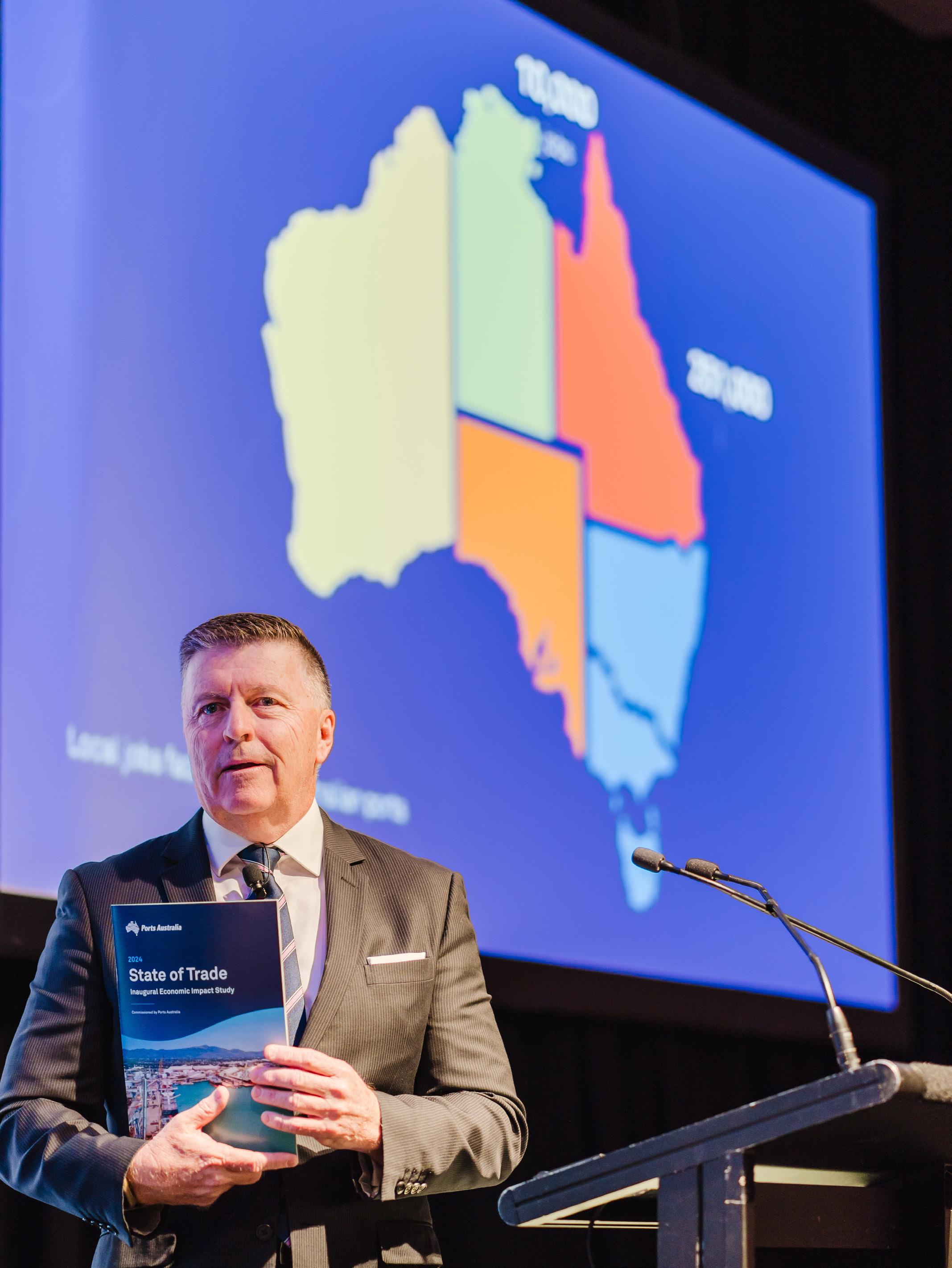


SBy John Thomson, Senior Claims Executive
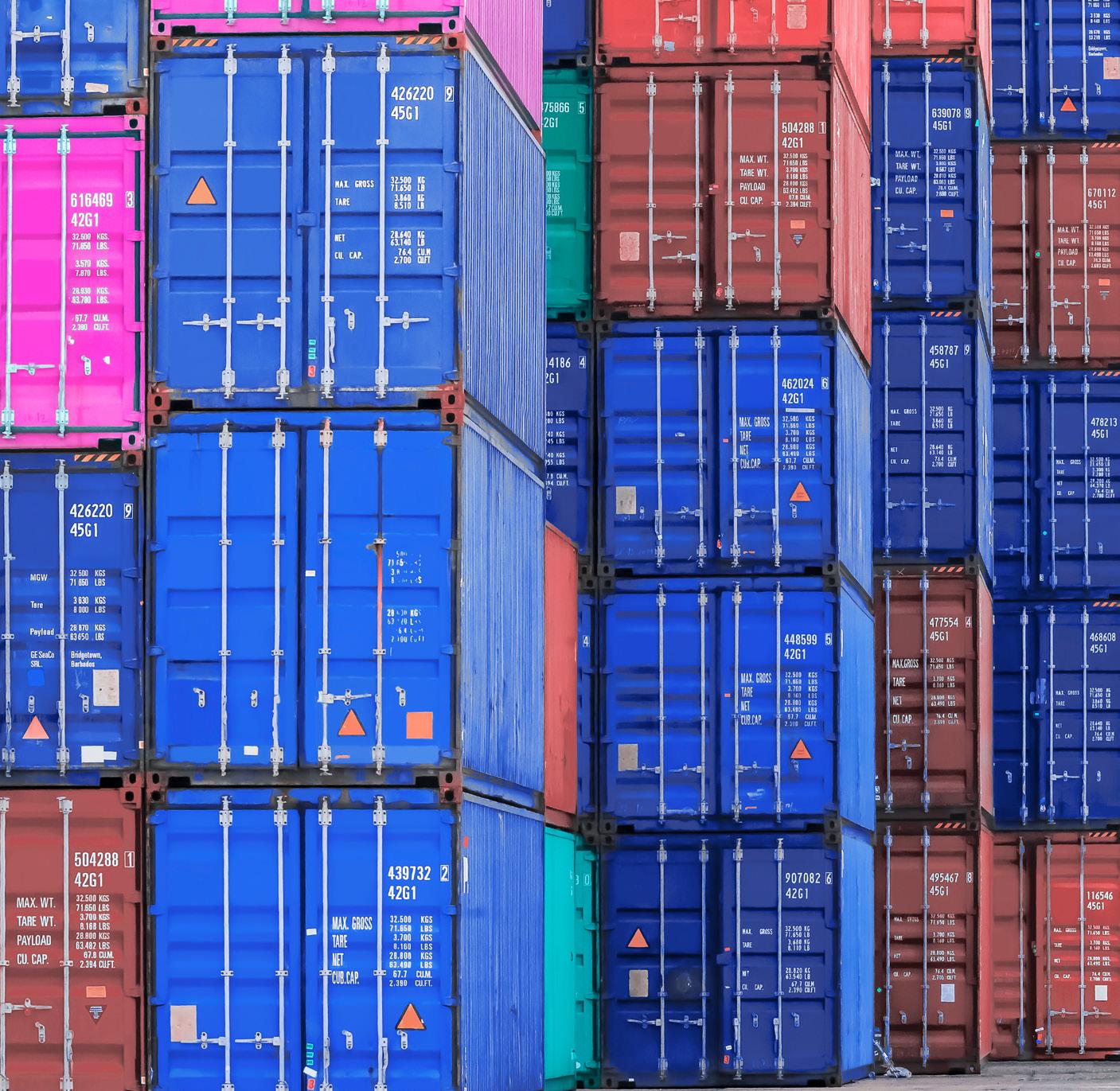
hipping companies are constantly pulled between handling operational pressures, forecasting equipment availability, and staying compliant with ever-changing safety standards. One growing issue is container shortages. Delays in sourcing replacements, especially in remote areas far from container depots, along with high demand, often lead to shippers accepting whatever is available to meet their quotas.
In 2021, the X-Press Pearl sank off the coast of Sri Lanka, caused by a pre-existing container fault that led to a leaking cargo of nitric acid. The case remains one of the most high-profile examples of what can happen when structurally compromised units and hazardous goods are mishandled before loading. The consequences were staggering - over $12 million AUD ($7.85 million USD) in compensation, a devastated marine ecosystem, long-term damage to Sri Lanka’s tourism economy and the collapse of livelihood for over 15,000 local fishermen.
Yet despite the scale of this disaster, 2025 has already shown worrying signs that such risks persist. Improper packaging, inefficient stowage and lashing, and damaged containers still cause costly disruptions and safety issues.
This year, the Australian Maritime Safety Authority (AMSA) raised alarms over a rise in unsafe containers and poor cargo packing standards. Two recent incidents underscore the urgency – in one, a container floor collapsed entirely during transit; in another, a shipment of steel rebar coils caused severe structural damage to the container walls. Rebar coils are dense, heavy and, when unsecured, can behave like wrecking balls inside metal boxes. A single

shift in transit can not only crush the contents or damage the container, but seriously injure vessel crews, stevedores or port staff. For insurers and reinsurers, the losses can include cargo claims, hull damage, pollution liability and injury settlements, all stemming from structural deficiencies and poorly secured and declared loads.
These individual failures are evidence of pervasive risks within shipping and pressures on the broader supply chain system. Tight shipment timelines, equipment shortages and fluctuating container availability all contribute to substandard decision making. Shippers, under pressure to meet deadlines, may accept unsafe containers or overpack to maximise efficiency, but using an unfit container to lower



costs or save time is a short-term decision with long-term consequences. Put plainly, a structurally compromised container is a liability waiting for a loss.
For shippers and container owners alike, structural safety is not just a regulatory box to tick- it’s a fundamental part of managing operational risk. Under instruments like the International Convention for Safe Containers (CSC) and Australia’s Marine Order 42, the presence of a verified CSC safety approval plate signals that a container meets international safety standards. Without it, the container may be legally non-compliant and structurally unfit for use - a risk that could compromise not just cargo, but liability posture as well.
Yet, in reality, containers with expired or missing inspections still find their way into circulation. This raises questions not just about regulation, but about the due diligence expected from every stakeholder in the logistics chain. Shippers have a clear role to play - reject any unit that lacks a visible and up-to-date CSC plate, and perform basic visual checks for signs of damage or corrosion. If that sounds like common sense, it’s because it is, but it continues to be overlooked, particularly when time and pressure compress loading windows.
Cargo packing is just as critical. Missteps in stowage don’t just increase the risk of cargo damage- they can actively undermine the structural integrity of the container itself. The CTU Code exists for a reason, offering clear principles like tight packing, proper bracing, and securing loads away from doors and thin walls. In reality, though, these guidelines are often overlooked in the breach, leading to torn walls, punctures, or worse.
For shippers and forwarders, the takeaway is clear. Container structural safety and proper packing aren’t just operational tasks,-they’re an integral part of mitigating the risk of accidents and resulting claims, injuries, and business disruption. In an industry increasingly focused on sustainability and accountability, visible safety isn’t a niceto-have- it’s your credibility, in plain view.
For insurers and reinsurers specialising in marine cargo, hull, liability or P&I policies, the practical takeaway is clear – poorly packed or structurally unsound containers

significantly heighten loss exposure. Proactive engagement with clients, from freight forwarders and logistics coordinators to carriers and exporters, has a direct role in risk mitigation.
Brokers and underwriters should look for evidence of robust pre-shipment controls. Are CSC plates routinely checked? Are shippers trained on CTU Code principles? Is container sourcing documented? Are packing declarations independently verified? Firms following these protocols position themselves as reliable partners, rather than sources of persistent claims exposure.
Regulators and policymakers also benefit from promoting harmonised enforcement of CSC and CTU principles, particularly across ports of export where inspection regimes still vary dramatically in rigor and consistency.
Unsafe containers are active sources of operational and financial risk in international transport networks. Whether it’s corrosion, misdeclaration, or a structural defect, every weak point can become a multi-million-dollar incident.
Preventing this starts with partnership. Container owners must enforce repair and inspection cycles. Shippers must refuse substandard units and follow best practices in cargo securing. And insurers, regulators and legal specialists must continue advocating for transparency, rigor, and accountability in container safety regimes.
Because a single faulty container doesn’t just carry cargo – it carries consequences for the entire supply chain.
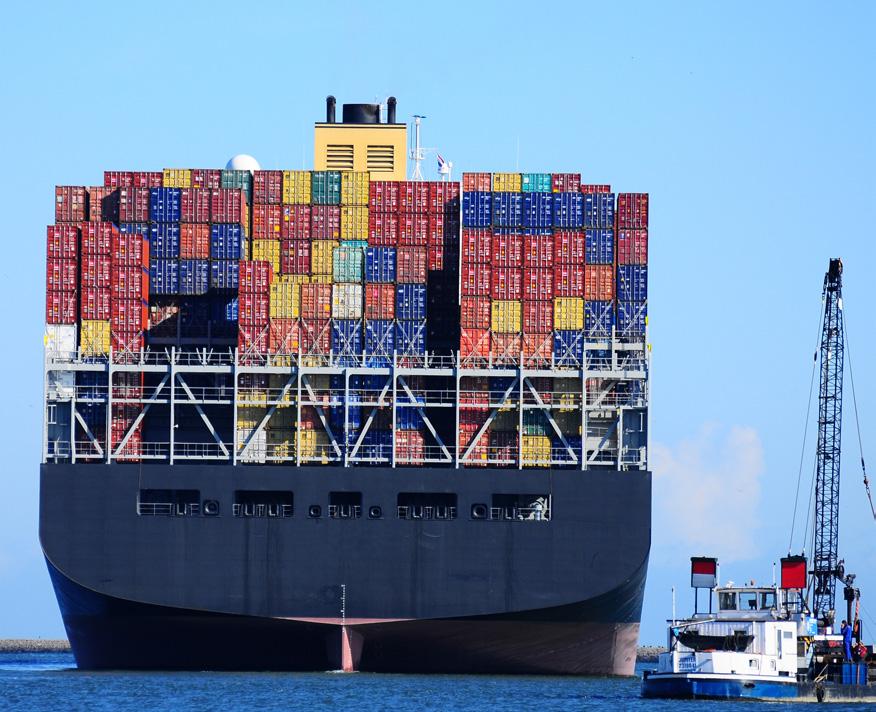

In an industry facing rapid technological change and shifting trade dynamics, a skilled, adaptable workforce is more critical than ever. This surge in recruitment and training reflects a recognition that people are at the heart of resilience and innovation. It’s encouraging to see ports and critical service providers across the country prioritising skills development and harnessing new technology to achieve this. They are actively creating pathways for the next generation of port professionals, from engineers and environmental scientists to IT specialists and marine pilots.
Whilst there are new challenges on the horizon, ports are preparing for them with purpose, investing in the people who will lead the sector forward.
AO: How do you support Australian ports to be sustainable and efficient gateways to international and national trade?
MG: Ports Australia works closely with our members to advance initiatives around sustainability and emissions reduction. Recently, we released a first-of-its-kind document, Greenhouse Gas Emissions Guidance for Ports, to assist ports in creating practical plans to decarbonise. This guidance was developed with support from Worley Consulting and provides a comprehensive, easy, and

explicit understanding of how Australian ports can quantify and report on Scopes 1, 2, and 3 greenhouse gas emissions.
When we brought everyone together to talk about emissions reporting, we expected Australia could simply adopt something already being done internationally. However, we discovered that nothing out there matched what we needed – something flexible but consistent for all Australian ports to use as a reference point.
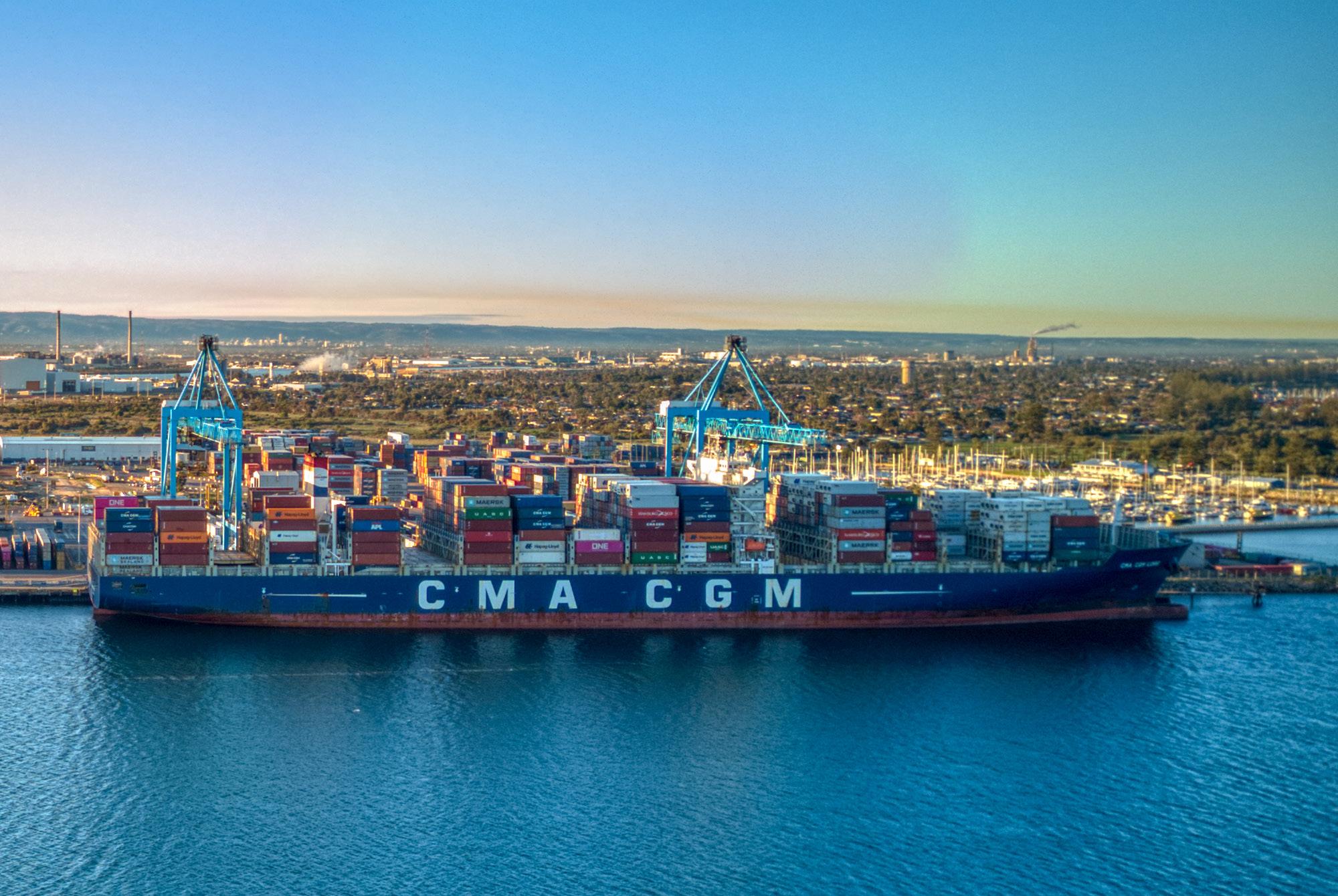
“PORTS AUSTRALIA HAS BEEN AROUND FOR OVER 100 YEARS, AND IN THAT TIME, WE’VE PROUDLY BEEN THE COLLECTIVE VOICE FOR THE PORTS SECTOR, ADVOCATING FOR JUST HOW IMPORTANT PORTS ARE TO AUSTRALIA’S ECONOMY, WORKFORCE, AND REGIONS”
– MIKE GALLACHER, CEO, PORTS AUSTRALIA
Instead of copying a standard, we created a guideline that offers clarity and national consistency. Although every port is unique, they all face similar challenges, and one of the biggest ones was defining the boundary of responsibility. Should we stop at the edge of the port or further down the supply chain? Getting alignment on this was crucial, which is what we’ve done with this guidance. When consulting on this project with our ports, particularly our Climate Change and Decarbonisation subcommittee, there wasn’t a lot of conflict, just a strong desire to understand and not be left behind. Our guidance doesn’t set strict limits. Instead, we’ve created a ‘minimum floor height’ – a baseline everyone should aim to meet. Ports can go above that as they see fit, but now at least
they know what everyone else is doing. It gives confidence and consistency, both internally and when reporting to the government. This report clearly holds value beyond Australian shores; in particular, it provides a strong reference point for those starting on this journey.
As Australia moves towards a net zero economy, decarbonising port operations not only helps meet environmental targets but also enhances Australia’s economic resilience, ensuring our ports remain internationally competitive in an increasingly greenconscious global market. Guidance like this will help ensure Australia’s ports are equipped to meet the evolving demands of global trade whilst contributing to a sustainable future.



What services does Austral Asian Maritime Group specialise in, and how does it differentiate from competitors? Following on, what services are included in your ongoing management package for small commercial and large recreational vessels?
Austral Asian Maritime Group provides many specialised services through its subsidiaries and associate companies.
We specialize in providing line launches and mooring services. In addition to specialised surveys, such as cargo damage inspections, protection and indemnity (P&I) claim investigations, etc, general average and loss adjustments, preport state inspections, crew and personnel transfer, stores and documents transfer, bio-security waste disposal, emergency repairs with flag-state dispensations on safety certificates, emergency crew provisions, and Harbour Pilotage.
What processes are in place for biosecurity waste collection, water supply, and patient and crew transfer, and how do you work with local regulations?
All our services are conducted in accordance with regulations and performed by professionally qualified personnel. We are fully insured and committed to safe management procedures.
Can you provide examples of the types of vessels you manage or operate, particularly in the Bass Straits or internationally?
We operate a range of vessels tailored to meet the specific needs of individual projects. As such, we have operated lines launches, pilot vessels, harbour tugs, security vessels, DP 1 and DP 2 vessels, trench diggers, cable layers, barges, etc.
Anil Bhatia has operated vessels trading internationally, with Australian and international flags, and Australian and international crews.
What resources are employed to ensure adequate mooring and unmooring services for vessels in Melbourne, Sydney, Brisbane, and Botany?
As a port Services company, we have dedicated, professionally qualified, and experienced staff, including drivers, deckhands, linesmen, berthing masters, and biosecurity-certified personnel who are safety-inducted at all terminals and berths.
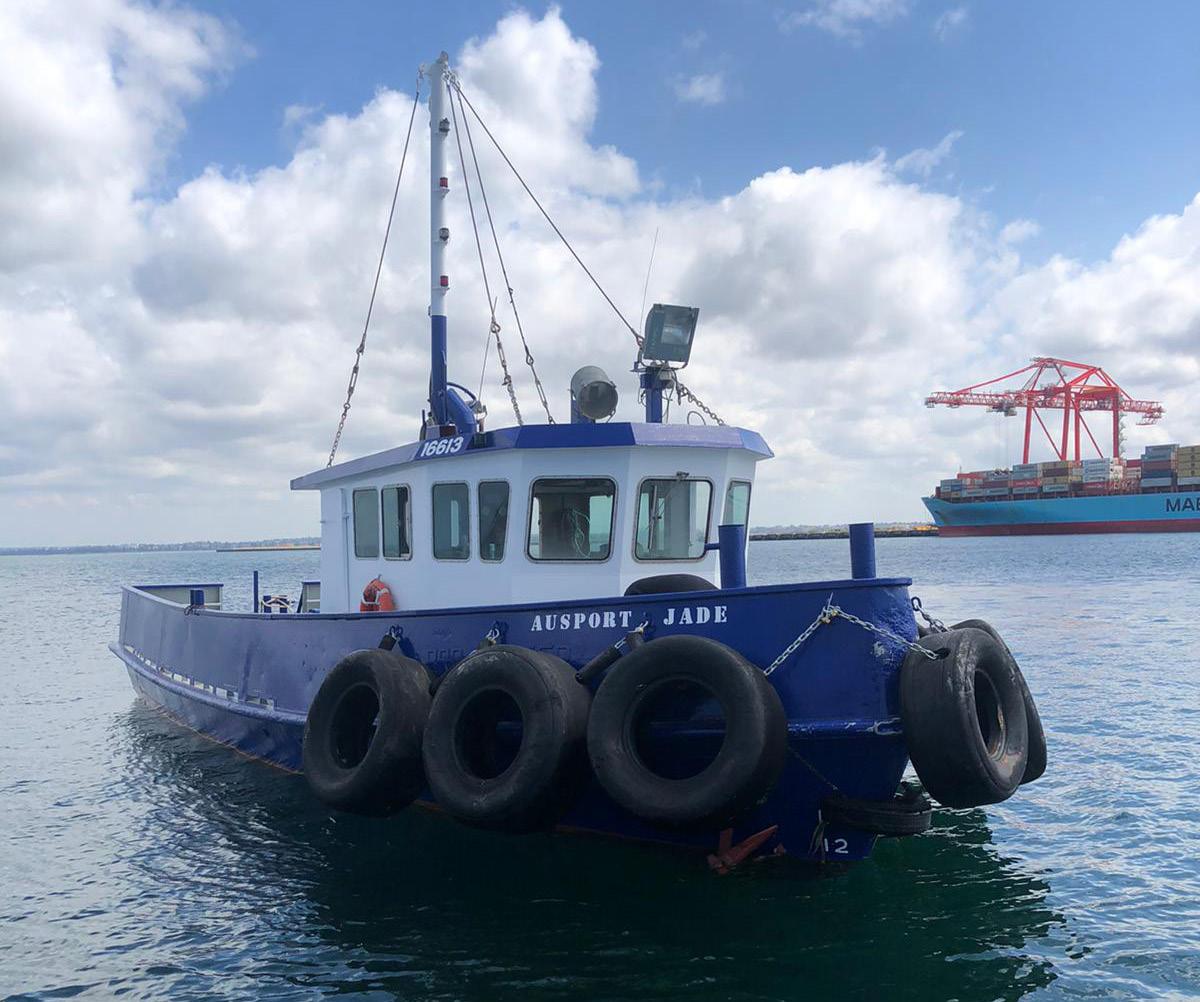
Additionally, we have a company safety programme and, of course, our own Safety Management Procedures, which evolve with time as every live document should.
Finally, what essential elements can you highlight regarding charter consultancy in the realms of cargo, sales and purchase (S&P)? What strategic advantages does this service provide to businesses aiming to strengthen their market position?
As ship and cargo brokers qualified from the Institute of Chartered Shipbrokers of London, we have the capability to broker charter parties and have done so in the past for our clients.
We have represented our clients in arbitration disputes as expert witnesses and assisted with their claims handling and negotiations with their underwriters.
This brings a wholesome and wide-ranging advantage to our supporters, enabling us to better serve our clients. This, and other similar areas of service, of course, add significant value to our profile and increase our capability levels.

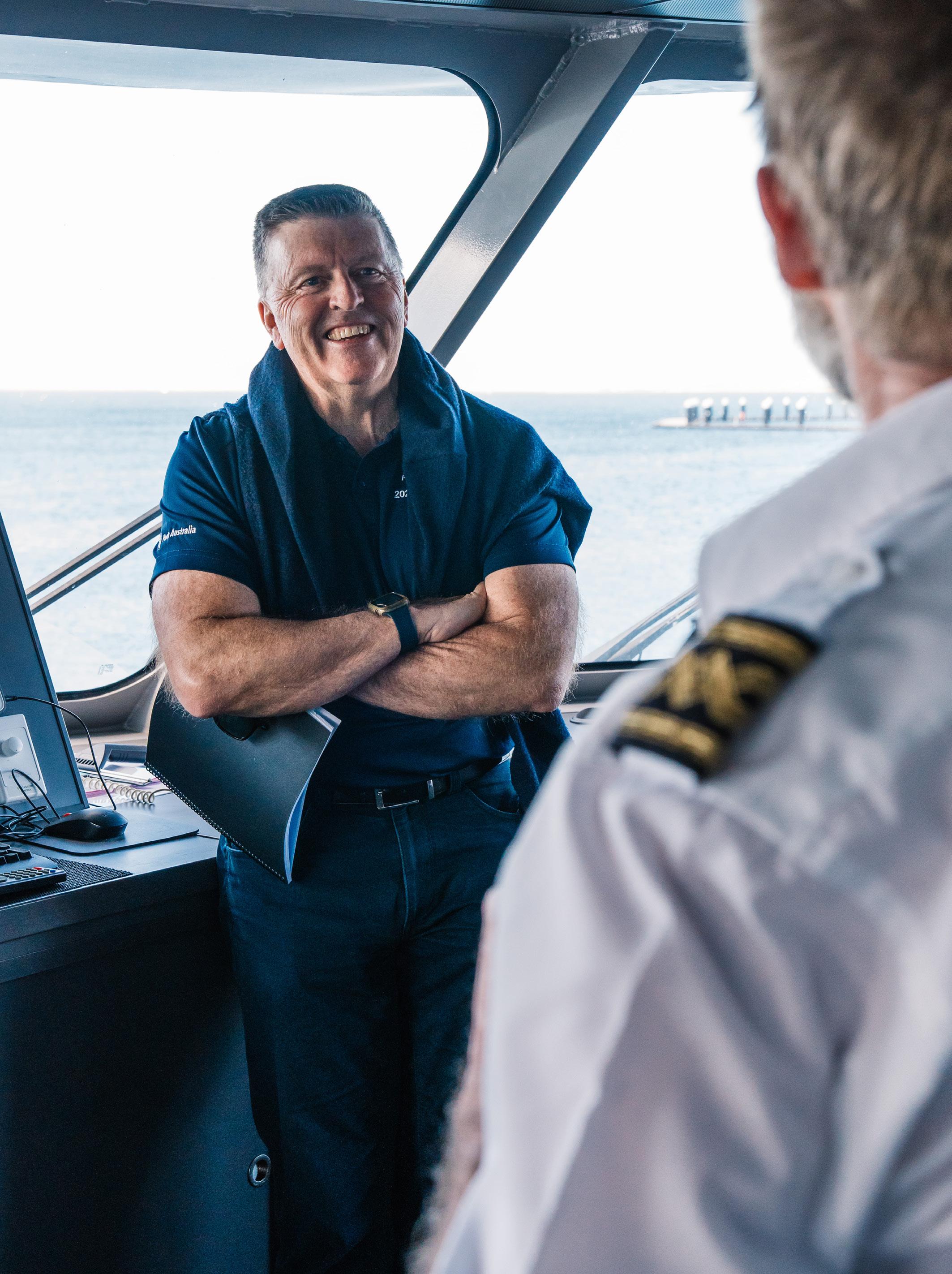
“OUR PORTS SERVE AS LINCHPINS IN GLOBAL SUPPLY CHAINS, ESPECIALLY BETWEEN ASIA, NORTH AMERICA, AND OCEANIA. IT’S NOW MORE IMPORTANT THAN EVER TO MAINTAIN CONNECTIONS TO OUR INTERNATIONAL TRADING ENVIRONMENT”
– MIKE GALLACHER, CEO, PORTS AUSTRALIA
AO: What about your mission to provide leadership, advocacy, and support in areas of common interest related to Australian ports?
MG: At Ports Australia, we’re proud to act as a united voice for the nation’s ports on the big issues that matter. Our role is about supporting our members and the broader maritime sector by taking the challenges and initiatives from industry directly to both state and federal governments. It’s about shaping policy that improves not just the efficiency of ports but the resilience of the entire supply chain.
We have ongoing conversations with government departments, regulators, and ministers on a wide range of topics, from border protection and environmental management to maritime jobs and trade sustainability. Our goal is always to ensure that the ports sector remains safe, efficient, and forward-thinking. One of our latest steps in building those connections has been the creation of Parliamentary Friends of Ports, a group which gives our members more direct access to key decision-makers in Canberra.
Collaboration is key. Whether it’s working with federal and state governments or other industry bodies, we’re focused on building the right policy settings for a strong, sustainable maritime future.
Our leadership doesn’t stop at Australia’s borders, as we’re also working across the Pacific to help build maritime capacity and resilience in communities facing very real climate and economic pressures.
AO: In what ways does Ports Australia bring together various stakeholders to remain at the forefront of environmental, safety, and security matters?
MG: Our organisation provides a platform for members to participate in technical committees, where they can engage in discussions on a broad spectrum of issues that are local, regional, and national. Our committees are a great space for people to come together, share ideas, and collectively work through challenges. It’s all about learning
from each other, finding practical solutions, and ensuring we’re all improving together across the ports network.
By harnessing the collaborative power of these committees, Ports Australia has been able to develop national safety protocols, publish best practice environmental reporting guidance, and identify common emerging threats to the sector, such as the need for international guidance on lithium battery safety in shipping.
Importantly, our associate members are invited to be a part of these committees. They aren’t port entities but represent our various service providers linked with the maritime sector, such as stevedores, towage providers, engineers, and environmental specialists. It’s important for us to harness their expertise across the entire operation of our ports and supply chains to work together on outcomes for our sector.
I mentioned earlier that the Greenhouse Gas Emissions Guidance document is a successful output from our committees. Our flagship Wharf Structures Condition Assessment Manual (WSCAM) is also an excellent example of our committees in action. The WSCAM is an industry-leading resource that helps asset managers conduct consistent and reputable inspections and is designed to enhance data collection and align asset owners with a consistent approach to infrastructure management in Australia.
These are just some of the ways Ports Australia is bringing our ports and industry providers together to enhance the sector.
Our committees encompass various aspects of running a port and address a wide range of functions, including:
• Corporate affairs and communications
• Cybersecurity
• Engineering and asset management
• Environment, planning, and sustainability
• Logistics
• Port operations
• Port security
• Work health and safety



Ports Australia is also proud to collaborate on an international level. Through our engagement with Pacific Island port authorities and global networks like the International Association of Ports and Harbors (IAPH), we ensure Australia remains on the cutting edge of global standards and innovation. Our international counterparts have identified cybersecurity as a major threat to ports, so we play a strong role in keeping informed on this issue as it evolves on a global scale.
AO: How does Australia’s strategic geographic position provide a distinct advantage?
MG: Australia’s position at the crossroads of the Indian and Pacific Oceans is strategically vital, not just for trade but for regional security and connectivity.
Our ports serve as linchpins in global supply chains, especially between Asia, North America, and Oceania. It’s now more important than ever to maintain connections to our international trading environment.

Ports Australia is leveraging this by building stronger ties with regional partners in the Pacific, championing shared infrastructure investment, and promoting digital and green transformation as part of our broader regional engagement strategy. This includes dialogue with Pacific port authorities seeking to build climate resilience, share skills, and improve safety standards. We see this not just as a moral obligation but a strategic priority for regional stability, prosperity, and shared environmental stewardship.
AO: Are you optimistic about the future of the ports and logistics industry throughout Australia?
MG: I’m very optimistic. Yes, the challenges are real for our ports, such as climate change, geopolitical uncertainty, and cyber threats, but there are also enormous opportunities. Australia’s ports are adapting quickly. We have ports examining the potential for future fuel bunkering, investing in automation, and digitising their operations to boost productivity.
By Haskoning Australia
With zero-carbon fuels gaining momentum and the IMO’s 2050 decarbonisation targets looming ever closer, Australian ports are standing at a crossroads: begin transitioning infrastructure now or risk being left behind as maritime trade evolves.
Unlike previous evolutions, the coming decarbonisation wave is far more complex due to investment risks, education and market evolution, and the dramatically different storage and infrastructure needs of alternative fuels.
At present, there are two hydrogenderived fuels that are considered the primary “green” alternatives: methanol and ammonia. Methanol’s compatibility with dual-fuel engines and its ability to be bunkered through modified existing systems make it the more desirable of the two. Its lower toxicity and simpler logistics make it more attractive for those seeking a short to mediumterm investment.
However, ammonia is carbon-free and is particularly appealing to the maritime freight sector. Yet its toxic nature demands extensive safety
protocols, highly trained personnel, and significantly larger exclusion zones, all of which present steep challenges for brownfield ports.
A recent ship-to-ship ammonia transfer trial off Pilbara’s coast, led by the Global Centre for Maritime Decarbonisation demonstrated that with proper planning and safety frameworks, ammonia bunkering is technically feasible and operationally safe to execute at adapted brownfield sites in Australian waters.
For those not ready to make a full transition to green alternatives, Liquefied Natural Gas (LNG), while not hydrogen-derived, serves as an intermediate solution. It can be used as a transitional fuel due to its lower emissions and established infrastructure, making it a practical short-term energy carrier as the industry shifts toward zero-carbon options.
Senior Infrastructure Economist at Haskoning, Cameron Gook, believes the commercial and operational stakes for ports couldn’t be higher. He warns that those that don’t act now, may find themselves outpaced by competitors.
“Timing, flexibility, and bringing your
stakeholders along for the journey will make or break the port of the future. For green fuel handling, methanol is in pole position for now but ammonia could dominate by 2050, especially in deep-sea trades,” said Gook.
Many ports are already building a green fuels strategy into their master planning, as they not only create a more sustainable long term plan, but also add to the attractiveness of the port for new business. This includes identifying opportunities for spatial allocation, engaging with utilities and regulators, and exploring how existing infrastructure might be adapted. Repurposing where possible is often the most efficient route, for example tanks, safety zones, and pipeline corridors can be modified or upgraded to support new fuel types, which will help reduce upfront investment costs and minimise trade disruption.

One major hurdle remains: safety. This is a particularly large issue for ammonia, while technical solutions exist, public perception and regulatory concerns continue

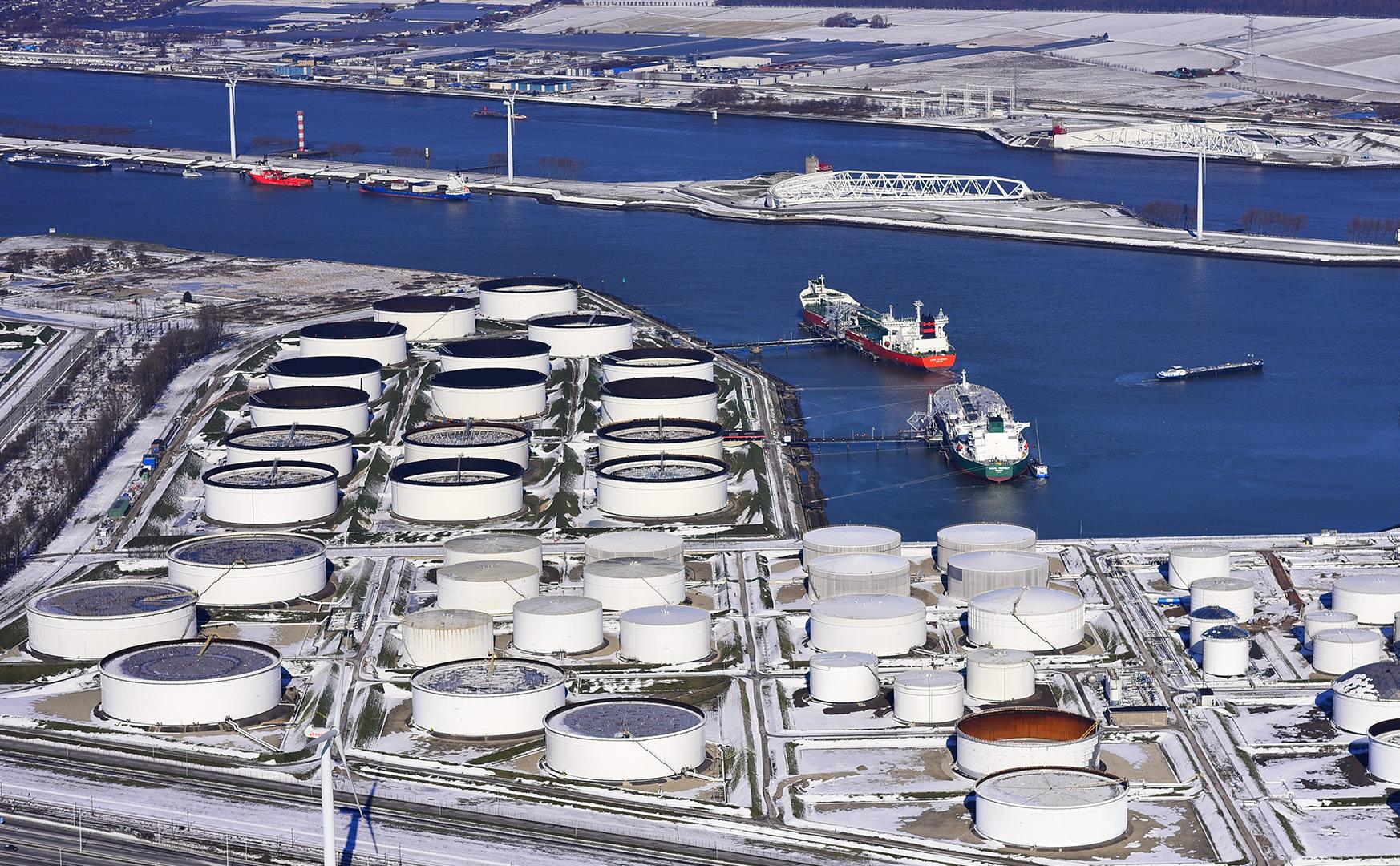
to shape the viability of its largescale deployment as a shipping fuel and traded commodity for industry energy applications. Performancebased safety frameworks and industry standards that assure safe operations are beginning to improve buffer zone requirements. In addition, continued innovations across monitoring and risk management are helping to transition theory into practice and reduce the spatial and infrastructure burden in a fully operational port, which is often surrounded by public and environmentally sensitive zones.
Despite these promising pathways forward, the sector remains resistant to wider adoption. Energy producers are reluctant to build supply without assured demand, and ports and shipping lines remain cautious without guaranteed access to green fuels.
“It’s a classic chicken-and-egg problem, but when you control both supply and demand, you enable the whole chain. An example of a vertically integrated project is the Middle Arm Sustainable Development Precinct’s renewable energy transition that aims to attract industries like green fuels and carbon capture and storage,” said Gook.
While market uncertainty remains, the best course of action is a phased approach. Rather than investing in full-scale green fuel handling infrastructure from the start, the first step for ports can be to start with ISO containers, truck-based distribution, and rental storage solutions. As volumes start to increase, infrastructure can be scaled

Cameron Gook is a Senior Infrastructure Economist in Port Economics and Infrastructure for Haskoning, the international engineering consultancy. He specialises in delivering major projects for governments and the private sector. He has a Master of Engineering from the University of Melbourne and a Bachelor of Commerce in Finance and Financial Planning from Deakin University, Australia.
accordingly. This strategy reduces capital exposure while keeping pace with market development.
Haskoning has successfully delivered several pilot projects that follow this approach, balancing technical proof-of-concept with stakeholder engagement to gain trust, demonstrate viability, and build momentum.
For smaller ports, this measured approach reduces financial barriers to entry. While limited capital and land availability may restrict scalability, smaller ports have the benefit of greater agility and may benefit from strategic locations between supply and demand centres. These advantages may lead to opportunities as consolidation hubs or bunkering outposts along new green corridors. And while not all existing infrastructure is compatible with green fuels, operational systems, layout footprints, and supporting technologies can often be reused or upgraded, an infrastructure advantage that should not be overlooked.
When it comes to the timing of an investment, there is no universal right answer.
“I hate to say it, but it depends. The only real right answer is to startnow. Europe is a first mover with significant uptake expected by 2028. There are also some regions in Asia including Korea that are already progressing rapidly. At this point in time, if you haven’t started planning for decarbonisation, you’re already behind,” said Gook.
“This requires updated masterplans, coalition-building, and proactive engagement with industry and
government. Green fuel corridors are forming quickly, and ports that delay their planning could miss the opportunity to lead or even participate in this next era of maritime trade.”
The most promising projects involve partnerships across multiple sectors. Regional port alliances can help spread risk, pool infrastructure, and reduce duplication to improve overall efficiency. One useful benchmark for assessing a port’s preparedness for green fuel adoption is the Port Readiness Level. This can provide guidance on investment decisions and identify capability gaps.
“Cooperation and competition don’t have to be mutually exclusive but ports that focus and move first will have the advantage,” he said.
Haskoning Australia works across both strategic and technical areas of decarbonisation for shipping lines and trade routes. Its expert consultancy and advisory team can provide insights and feasibility studies, and can support the implementation of planning, engineering, and operations.
Ultimately, success in this transition will be measured not by caution. Ports need to start actioning change now to be ready to scale quickly or risk being outpaced by competitors.
For more information on how to build smart, green and resilient maritime infrastructure, visit haskoning.com/ maritime

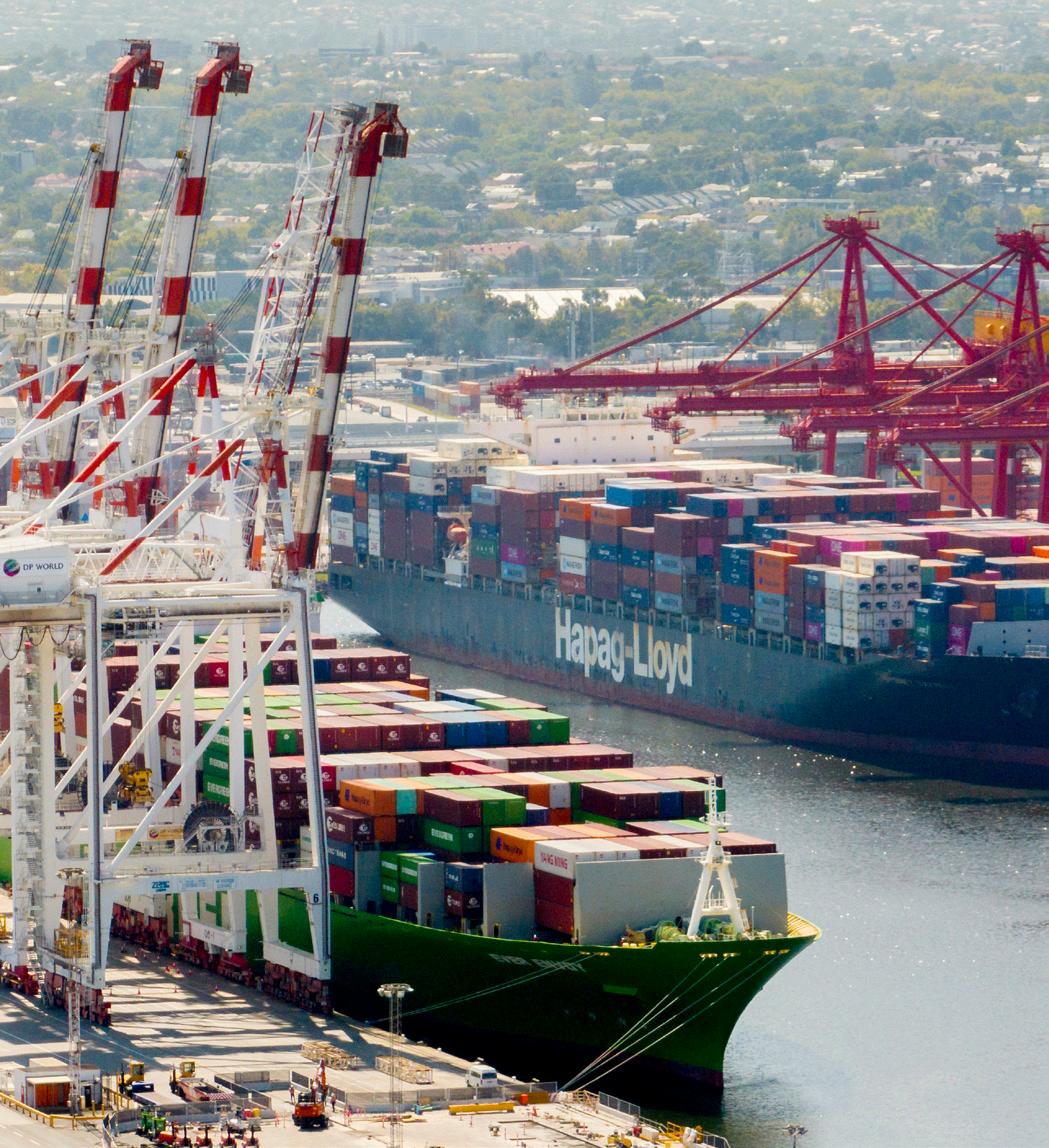

There’s a renewed focus from our ports, towage operators, pilots, and engineers on training and upskilling the next generation of port sector professionals. The fact that ports are now central to both climate and economic policy shows just how much potential this sector holds. I am excited to see further collaboration with our international counterparts on the big issues impacting ports globally. I’m also keen to see Ports Australia produce
TASPORTS BACKS TASMANIA’S RENEWABLE FUTURE (BASS STRAIT RENEWABLE ENERGY TERMINAL)
In late 2024 TasPorts unveiled its vision for the Bass Strait Renewable Energy Terminal at the Port of Bell Bay.
TasPorts’ Chief Executive Anthony Donald said the terminal aimed to position Tasmania as a leader in wind and renewable energy generation.
“TasPorts is already a global leader in renewable energy with the island powered 100% by renewables since 2020, with an aim to be 200% by 2040,” he said.
The Bass Strait Renewable Energy Terminal proposes a staged development of up to 25 hectares of additional land at Bell Bay, strategically located near the newly declared Bass Strait offshore wind zone.
Mr Donald said the terminal is designed to support offshore and broader renewable wind projects by providing bespoke infrastructure, large-scale lay-down and storage areas, as well as essential berthing facilities.
“The project has progressed through concept and identification phases, with a preferred project case expected by mid-2025, and a comprehensive business case by mid-2026 subject to funding and commercial agreements.”
Background
Tasmania became the first Australian state and one of the few places in the world to achieve 100% renewable status. Tasmania plans to double its renewable energy production by 2040, with its renewable energy leadership attracting investors and energy companies looking to develop sustainable solutions.

TASPORTS LEADS THE WAY WITH ECOPORTS CERTIFICATION
TasPorts is one of the first port authorities in the world to secure globally leading EcoPorts certification across multiple ports.
In 2023 TasPorts achieved EcoPorts certification for the Port of Devonport, and in 2024 the Ports of Hobart, Burnie and Bell Bay were also certified.
TasPorts’ Chief Executive Anthony Donald said achieving EcoPorts certification across multiple sites is more than a milestone, it is a statement of commitment to sustainable port operations.
To attain the certification, TasPorts implemented a comprehensive Environmental Management System focused on:
Air quality, including monitoring and initiatives to reduce carbon emissions;
• Water quality and conservation strategies to manage water resources;
• Waste management, including programmes
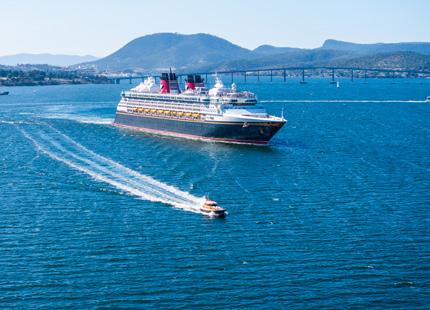
a future iteration of State of Trade, which will paint a picture of our evolving import and export markets and how ports continue to invest in building Australia.
AO: Finally, what are Ports Australia’s goals and priorities, and what strategies will you employ to facilitate and implement them?
MG: Our strategic priorities are shaped by our board and reflect the big national issues facing ports today.
Since our last feature in AO, some of those priorities have evolved, whilst others, like decarbonisation, safety, workplace skills, and resilience, are still right at the top of the list. Security remains a major focus, too. That said, we’re also very responsive to emerging issues. Things can change quickly in this sector, so we remain flexible and ready to tackle new challenges as they arise.
Looking ahead, one of the big things on our radar is our BizOps Conference in Gladstone later this year. It’s a great opportunity to bring together the operational professionals who keep our ports running and dive into the latest innovations in the sector. Events like this and our Biennial Conference are a huge part of how we stay connected and collaborate with the wider ports and maritime community, not just across Australia but internationally as well.
Telephone: 1300 366 742
Email: reception@tasports.com.au
Website: tasports.com.au
aimed at reducing waste and promoting recycling;
• Biodiversity protection, and efforts to preserve natural habitats and promote ecological health.
Mr Donald said the initiatives are part of TasPorts’ broader sustainability strategy, which aligns with the United Nations Sustainable Development Goals (UNSDGs), with the aim to embed sustainable practices across all operations.
“By achieving EcoPorts certification, TasPorts not only enhances its environmental performances but also contributes to regional economic resilience, helping support the global shift towards greener supply chains,” he said.
“By meeting EcoPorts certification standards, it demonstrates TasPorts’ commitment to reducing its environmental footprint, enhancing sustainable ports operations, ensuring legal and regulatory compliance, and implementing continuous improvement practices.”
Background
EcoPorts aligns with the ISO14001 standard, which is governed by the ESPO (European Sea Ports Organisation) and independently certified by RQA Nederland B.V. It is the leading internationally recognised framework for EMS, focusing on continuous improvement, legal compliance and proactive environmental stewardship, helping ports to reduce their ecological and environmental footprint.
We’ve been fortunate to have delegates from our Pacific port members join us, along with leaders from the IAPH and European ports. It’s been fantastic to exchange ideas and strengthen those relationships.
We’re continuing to work closely with government on how we can better engage with our neighbours and build a stronger regional network across Oceania. New Zealand has played a key role in that, and we’re pleased to now have several New Zealand ports as members.
Beyond that, we’re working closely with our committees on new resources and projects aimed at improving the sustainability and resilience of our ports. It’s all about ensuring we’re setting the sector up for long-term success.
I’m looking forward to reporting back on the success of these projects in a future AO feature.

info@portsaustralia.com.au portsaustralia.com.au

